Complete Solutions to Practice Exercies of chapter HEAT, TEMPERATURE AND CALORIMETRY of Class 11 book with complete answers and questions
| Class 11 | PHYSICS |
| Chapter | HEAT, TEMPERATURE AND CALORIMETRY |
| BITSAT GUIDE | Practice Exercies |
| Number Of Questions | 36 |
| Academic Year | 2023-24 |
The temperature of an iron piece is heated from `30^@ C "to" 90^@ C`. What is the change in its temperature on the fahrenheit scale and on the kelvin scale?
01:56View SolutionAt `30^(@)`C, the hole in a steel plate has diameter of 0.99970 cm. A cylinder of diameter exactly 1 cm at `30^(@)`C is to be slide into the hole. To what temperature the plate must be heated?
(Given `alpha_(Steel)=1.1xx10^(-5^(@))C^(-1)`03:22View SolutionA monoatomic ideal gas, initially at temperature `T_1,` is enclosed in a cylinder fitted with a friction less piston. The gas is allowed to expand adiabatically to a temperature `T_2` by releasing the piston suddenly. If `L_1 and L_2` are the length of the gas column before expansion respectively, then `(T_1)/(T_2)` is given by
02:47View SolutionThe graph between two temperature scales `A` and `B` is shown in Fig. Between upper fixed point and lower fixed point there are `150` equal divisions on scales `A` and `100` on scale `B`. The relation between the temperature in two scales is given by_
_S01_001_Q01.png) 02:17View Solution
02:17View SolutionHeat given to a system can be associated with
01:12View SolutionAt what temperature (in `^(@)C`, the fahrenheit and celsius scale gives same reading?
01:11View SolutionWhich one of the following would reaise the temperature of 40 g of water at `20^(@)`C most when mixed with?
04:27View SolutionIf same amount of heat is supplied to two identical spheres (one is hollow and other is solid), then
01:25View SolutionAt `30^(@)`C, a lead bullet of 50 g, is fired verticaly upwards with a speed of 840 m/s. The specific heat of leasd is 0.02 cal/`g^(@)`C. On returning to the starting level, it strikes to a cake of ice at `0^(@)`C. Calcualte the amount of ice melted (Assume all the energy is spent in melting only)
04:43View SolutionA second's pendulum clock havig steeel wire is calibrated at `20^(@)`C. When temperature is increased to `30^(@)`C, then calculate how much time does the clock
`[alpha_(Steel)`=`1.2xx10^(-6^(@))C^(-1)`04:23View SolutionA plate composed of welded sheets of aluminium and iron is connected to an electrical circuit as shown in figure. What will happen if a fairly strong current to be passed through the circuit?
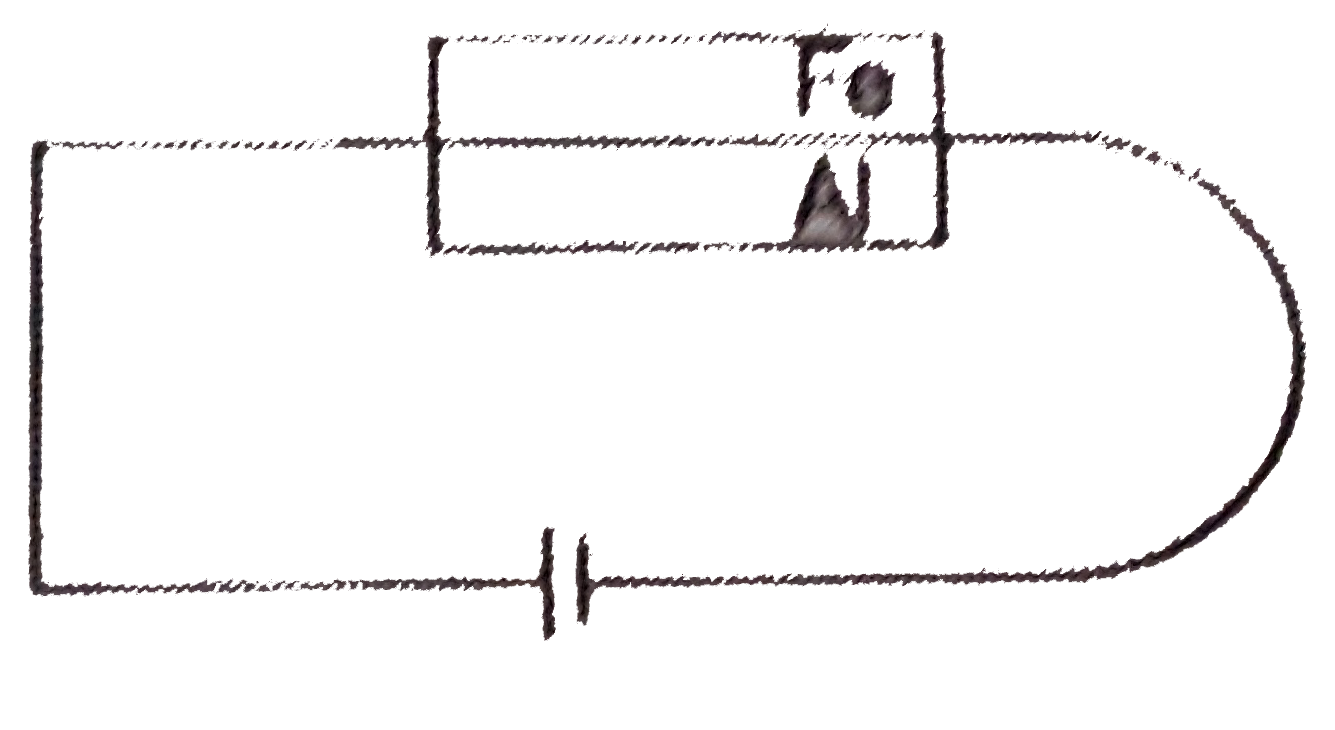 02:57View Solution
02:57View SolutionA copper rod of length `l_(0)` at `0^(@)`C is placed on smooth surface. Now, the rod is heated upto `100^(@)`C. Find the longtidudinal strain developed.
(`alpha`=coefficient of linear expansion)01:09View SolutionTwo metal rods are fixed end to end between two rigid supports, as shown in figure. Each rod is of length 'l' and area of cross-section is A. When the system is heated up, determine the conditioin whenthe juction between rods does not shift.
[Given, `Y_(1)` and `Y_(2)` are Young's modulus of materials of the rods, `alpha_(1)` and `alpha_(2)` are coefficient at linear expansion.
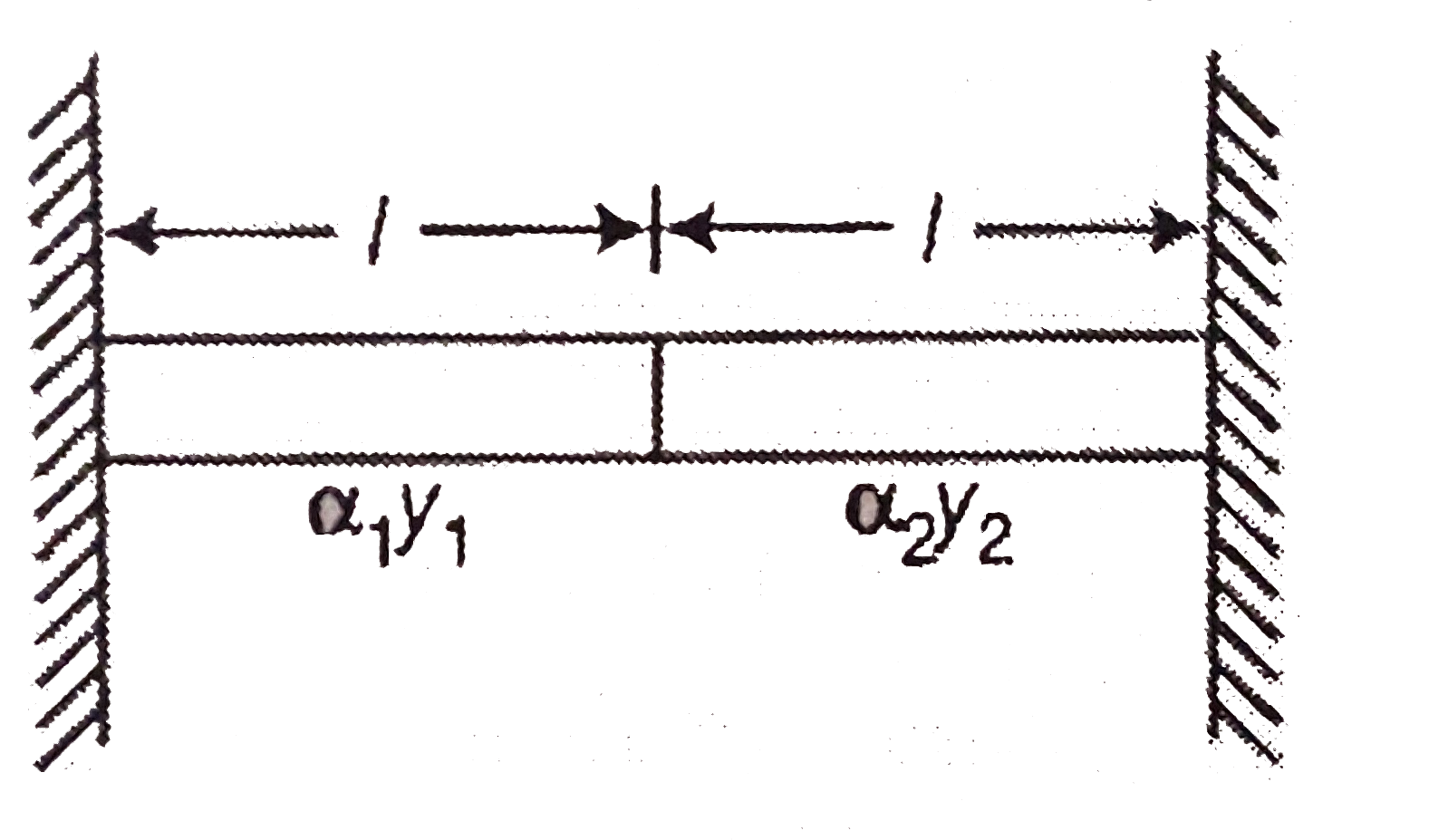 03:13View Solution
03:13View SolutionA steel rod with a cross-sectional area of `150 mm^(2)` is stretched between two fixed points. The tensile load at `20^(@)C` is `5000N`.
`(a)` What will be the stress at `-20^(@)C` ?
`(b)` At what temperature will the stress be zero ?
(Assume `alpha=11.7mu m//m^(@)C` and `Y=200GN//m^(2)`)04:49View SolutionIn an anisotropic medium the coefficients of linear expansion of a solid are `alpha_(1)`, `alpha_(2)`, and `alpha_(3)`. In three mutually perpendicualr directions. Tjhe coefficient of volume expansion for the solid is
09:10View SolutionA liquid when heated in a copper vessel and when heated in a silver vessel, the apparent coefficient of expansion is C and S, repsctively. If coefficients of linear expansion of copper is A, then coefficient of linear expansion of silver is
03:00View SolutionUsing the following data, calculate at what temperature will the wood just sink in benzene
Density of wood at `0^(@)`C = `8.8 xx 10^(2)kg//m^(3)`
Density of benzene at `0^(@)`C = `9 xx 10^(-4)K^(-1)`
Cubical expansivity of wood = `1.5 xx 10^(-4)K^(-1)`
Cubical expansivity of benzene = `1.2 xx 10^(-3)K^(-1)`03:42View SolutionThe radius of metal sphere at room temperature T is R and the coefficient of linear expansion of the metal is `alpha`. The sphere is heated a little by a temperature T, so that new temperature is `T+DeltaT`. The increase in volume of sphere is approximately
02:20View SolutionA copper rod and steel rod having length `L_(c)` and `L_(s)` respectively at certain temperature. It is observed that difference between their length remains constant at all temperature. If `alpha_(c)` and `alpha_(s)` ar their respective coefficient of linear expansions. Then, ratio of `L_(s)/L_(c)` is `
02:01View SolutionOne mole of an ideal monoatomic gas is heated at a constant pressure of 1 atmosphere from `0^(@)`C to `100^(@0`C. Work done by the gas is
01:52View SolutionThe following figure represents the temperature versus time plot for a given amount of a substance when heat energy is supplied to it at a fixed rate and at a constant pressure. Which part of plot represent a phase change?
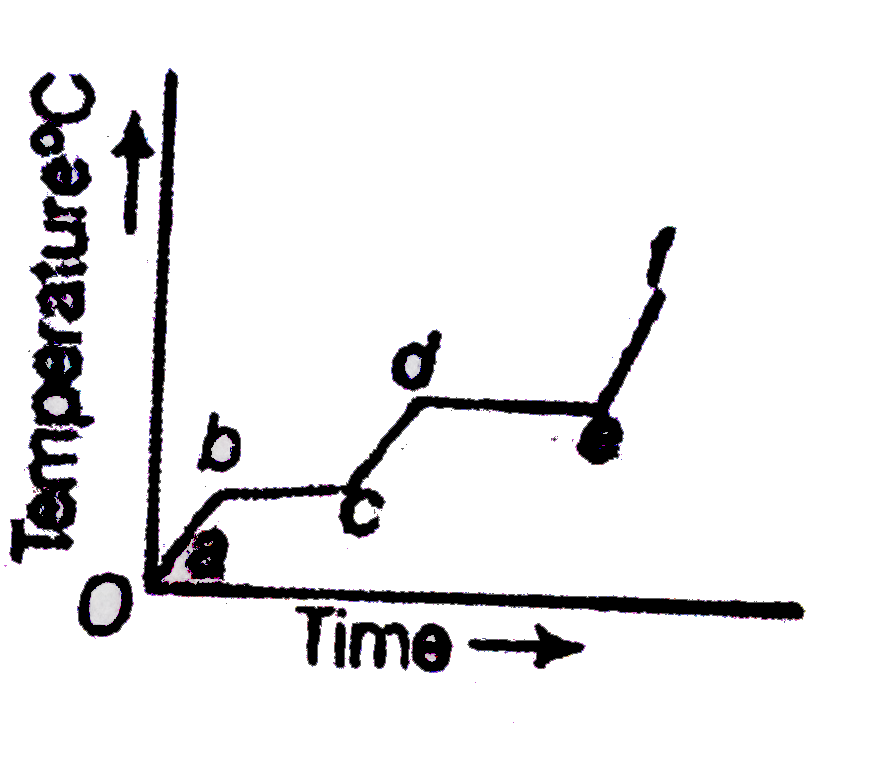 01:32View Solution
01:32View SolutionA sphere A is placed at smooth table. An another sphere B is suspended as shown in figure. Both spheres are identical in all respects. Equal quantity of heat is supplied to both spheres. All kiinds of heat loss are neglected. The final temperatures of A and B are `T_(A)` and `T_(B)` respectively, then
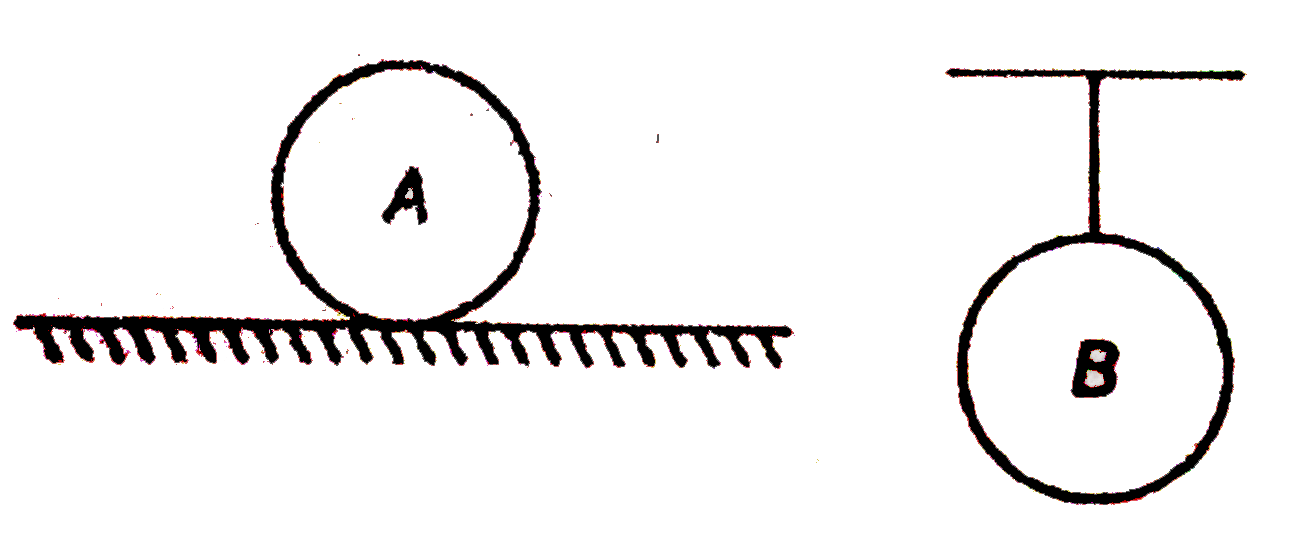 01:49View Solution
01:49View SolutionCalcualte the resulting temperatures when 20 g of boiling water is poured into an ice-cold brass vesel (specific heat=0.1 cal/`g^(@)`C) of mass 100 g.
01:35View SolutionIn similar calorimeters, equal volume of water and alcohol, when poured take 100 s and 74 s respectivel to cool from `50^(@)`C to `40^(@)`C. If the thermal capacity of each calorimeter is numerically equal to volume of either liquid, then calculatethe specific heat capacity of alcohol.
(Given, the relative density of alcohol as 0.8 and specific heat capacity of water as 1 `cal/g/^(@)C)`05:32View SolutionThe ratio of thermal capacities of two spheres A and B, their diameters are in the ratio `1:2` densities in the ratio `2:1`, and the specific heat in the ratio of `1:3`, will be
02:23View SolutionThe motor heat capacity of rock salt at low temperatures varies with temperatures according to Debye's `T_(3)` law.
Thus, C = `kT^(3)/theta^(3)`, where k = 1940 J`mol^(-1)Ko^(-1)`, `theta` = 281 K)
Calculate how much heat is required to raise the tempratures of 2 moles of rock salt from 10 K to 50 K?02:50View SolutionEqual masses of two liquids A and B contained in vessels of negligible heat capacity are supplied heat at the same rate. The temperature-time graphs for the liquids are shown in the figure. If S represents specific heat and L represents latent heat of liquid, then
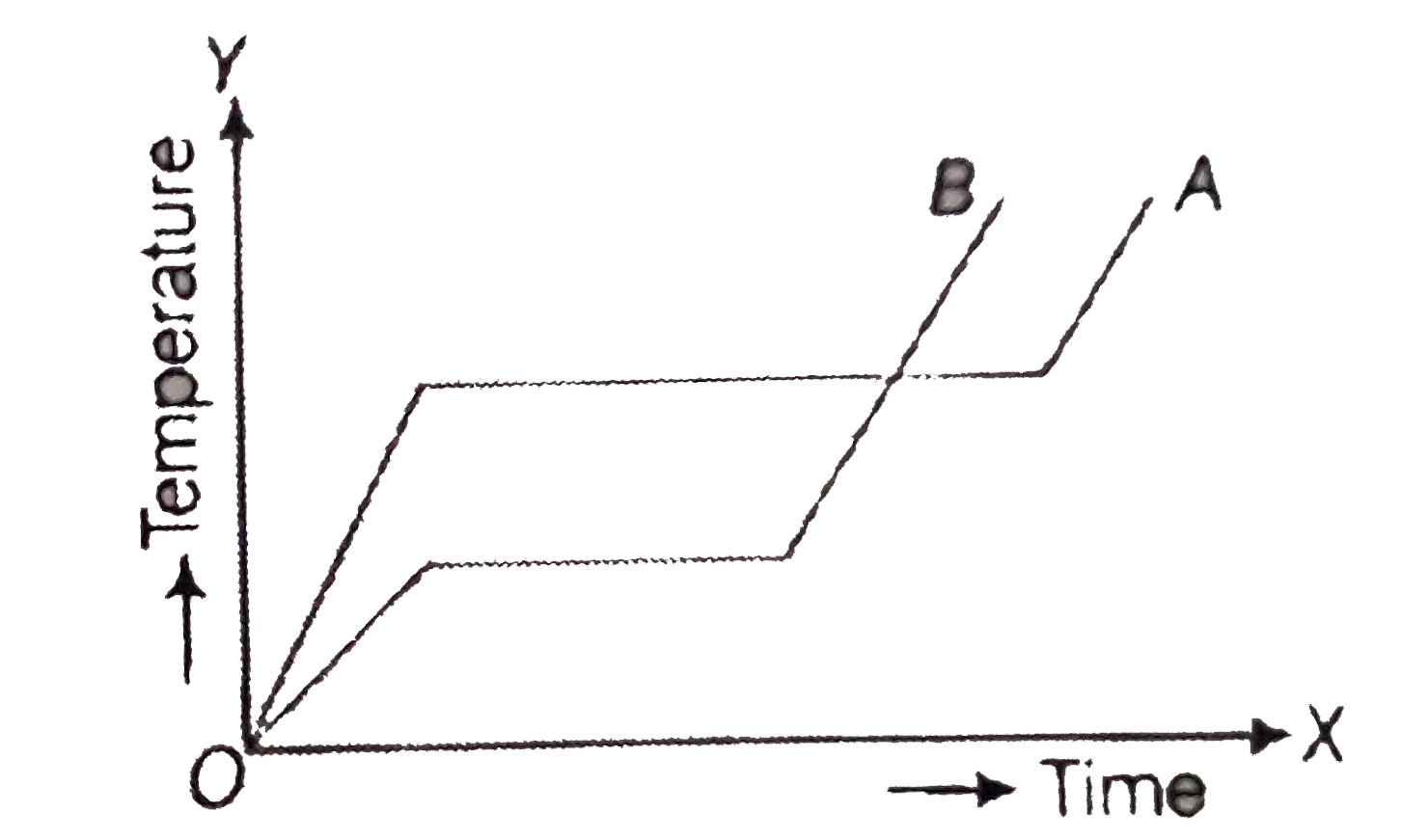 02:00View Solution
02:00View SolutionThe specific heat of a substance at temperature at `t^(@)`c is `s=at^(2)+bt+c`. Calculate the amount of heat required to raise the temperature of m g of the substance from `0^(@)`C to `t_(0)^(@)`C
03:20View SolutionIn Q29. find the average value of specific heat.
03:20View SolutionA `10 kW` drilling machine is used to drill a bore in a small aluminium block of mass `8.0 kg`. How much is the rise in temperature of the block in `2.5` minutes, assuming `50%` of power is used up in heating the machine itself or lost to the surrounding? Specific heat of aluminium `= 0.91 J//g^(@)C`.
02:36View SolutionA thermally insulated piece of metal is heated under atmosphere by an electric current so that it receives electric energy at a constant power P. This leads to an increase of the absoulute temperature T of the metal with time t as follows `T=a^(1/4)`. then the heat capacity `C_(p)` is
02:25View SolutionSteam at `100^@C` is passed into 1.1 kg of water contained in a calorimeter of water equivalent 0.02 kg at `15^@C`till the temperature of the calorimeter and its contents rises to `80^@C` . The mass of the steam condensed in kilogram is
03:47View Solution5 g of water at `30^(@)`C and 5 g of ice at `-20^(@)`C are mixed together in a caloritmeter. The water equivalent of calorimeter is negliglible and specific heat and latent heat of ice are 0.5 cal/`g^(@)`C and 80 cal/g repsectively. The final temperature of the mixture is
02:38View SolutionWater at `10^(@)`C is present in a thermally insulated container. Calculate the ratio of mass of ice formed and initial mass of water, if a small crystal of ice is thrown into it.
04:02View SolutionIt takes 20 minutes to melt 10 g of ice, when ray from the sun are focused by a lens of diameter 5 cm on to a block of ice. Calcualate the heat received from the sun of `1cm^(2)` per minute.
(Given, L = 80 kcal/kg)04:02View SolutionIn an energy recycling process, X g of steam at `100^(@)`C becomes water at `100^(@)`C which converts Y g of ice at `0^(@)`C into water at `100^(@)`C. The ratio of X/Y will be
03:52View Solution
Practice Exercies questions and complete solutions for chapter HEAT, TEMPERATURE AND CALORIMETRY of BITSAT GUIDE PHYSICS (HINGLISH) of Class 11
